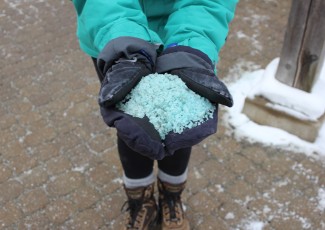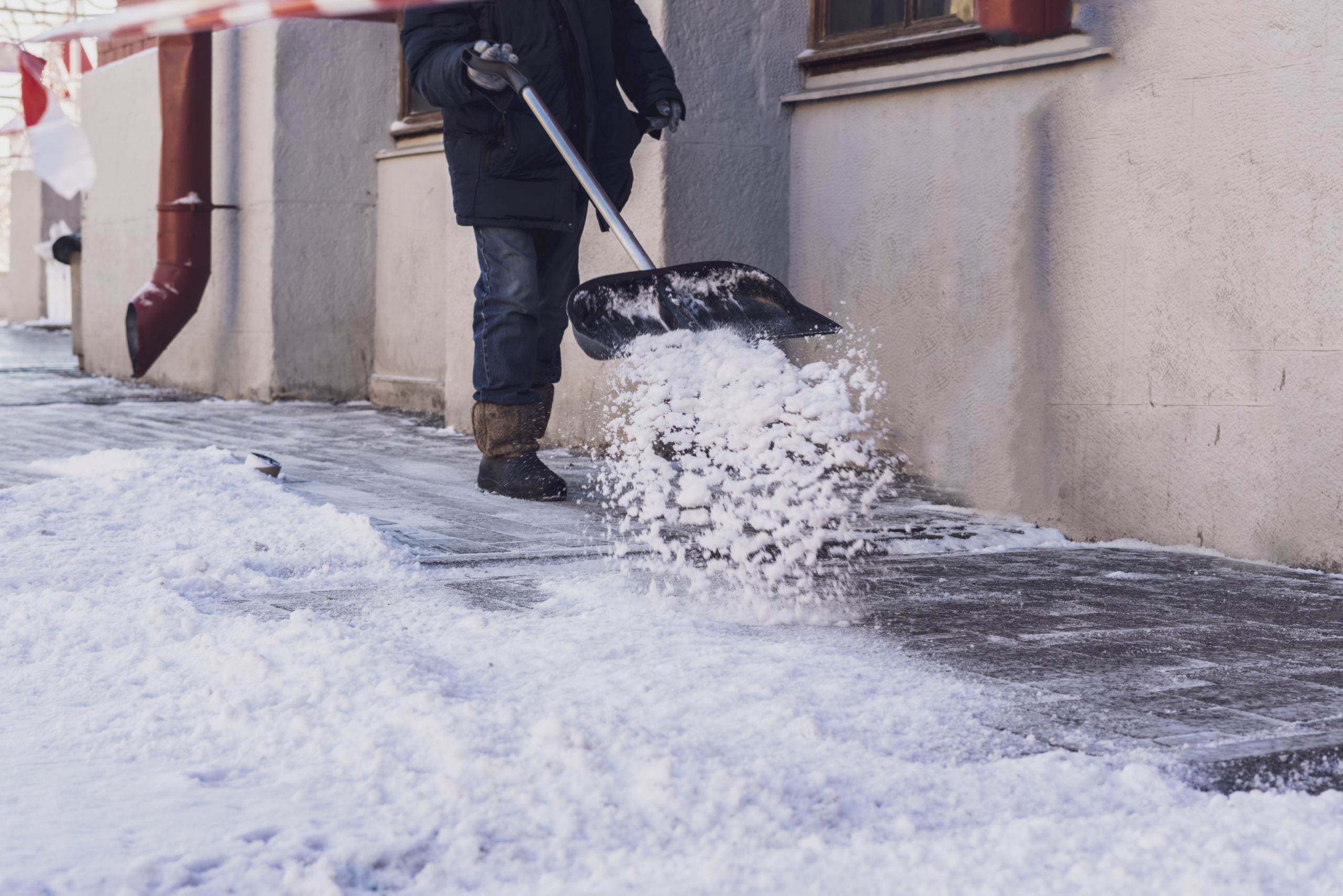Salt Sustainable Alternative

Salt is a crucial ingredient in the food industry, but its production and consumption have raised concerns over its impact on the environment. The overuse of salt in the food industry has resulted in several environmental problems, including water pollution, soil degradation, and depletion of natural resources.
One promising sustainable alternative to traditional salt production is the use of seaweed. Seaweed contains natural salts that can be extracted and used as a salt substitute in food products.
Organic salt – the sustainable alternative to road salt

Organic salt, also known as agricultural salt, is a natural alternative to traditional road salt that is made from agricultural byproducts such as sugar beet molasses and corn.
Organic salt is sustainable because it is made from renewable resources that are readily available. Unlike traditional road salt, which is obtained through mining, organic salt is made from agricultural waste, which is a byproduct of food production.
What are the eco-friendly alternatives to road salt?

Road salt, while effective in melting ice and snow on roads, has negative impacts on the environment. The overuse of road salt can lead to water pollution, soil degradation, and harm to wildlife. Fortunately, there are several eco-friendly alternatives to traditional road salt that are sustainable and effective. Here are some of the most popular eco-friendly alternatives to road salt:
Sand: Sand is a natural alternative to road salt that provides traction on icy roads. It does not melt ice or snow, but it can be spread on roads to help prevent slipping and sliding.
Beet juice: Beet juice is a natural deicer that is made from sugar beet juice and can be used as an eco-friendly alternative to traditional road salt. It is effective in melting ice and snow and is less harmful to the environment.
Calcium magnesium acetate (CMA): CMA is an environmentally-friendly alternative to road salt that is made from vinegar and limestone. It is effective in melting ice and snow and does not harm the environment.
Potassium acetate: Potassium acetate is a natural deicer that is made from the byproducts of sugar cane processing. It is effective in melting ice and snow and is less harmful to the environment.
Brine: Brine is a solution of salt and water that can be used as an eco-friendly alternative to traditional road salt. It is less harmful to the environment and can be sprayed on roads before a winter storm to prevent ice and snow from sticking.
Liquid magnesium chloride: Liquid magnesium chloride is a natural deicer that is effective in melting ice and snow. It is less harmful to the environment and can be sprayed on roads before a winter storm.
By using these eco-friendly alternatives to road salt, we can reduce the negative impact of deicing on the environment and create a safer and more sustainable future for ourselves and the planet.
What is the common problem with salt?

While salt is an essential component of our diets and plays a crucial role in many industries, including food production, health, and agriculture, there are several common problems associated with salt. Here are some of the most common problems with salt:
High Sodium Intake: Salt is one of the primary sources of sodium in our diets, and high sodium intake has been linked to several health problems, including high blood pressure, heart disease, and stroke.
Water Pollution: The overuse of salt in road deicing, agricultural practices, and other industries can lead to water pollution. Excess salt can contaminate waterways and harm aquatic plants and animals.
Soil Degradation: Overuse of salt in agricultural practices can lead to soil degradation, making it difficult for plants to grow and reducing crop yields.
Corrosion: Salt is corrosive and can damage cars, bridges, and other infrastructure. Overuse of salt in road deicing can lead to expensive repairs and maintenance.
Environmental Impact: Mining and processing salt can have a negative impact on the environment, including habitat destruction and greenhouse gas emissions.
Health Risks: While salt is necessary for our health, excessive intake can lead to several health problems, including high blood pressure, kidney disease, and stroke.
By being aware of these common problems with salt, we can take steps to reduce our consumption and find more sustainable and eco-friendly alternatives.
Eco-friendly Salt Alternatives for Melting Ice and Snow

The use of traditional road salt for melting ice and snow has negative impacts on the environment, including water pollution, soil degradation, and harm to wildlife. Fortunately, there are several eco-friendly alternatives for melting ice and snow that are sustainable and effective. Here are some of the most popular eco-friendly salt alternatives for melting ice and snow:
Beet Juice: Beet juice is a natural deicer that is made from sugar beet juice and can be used as an eco-friendly alternative to traditional road salt. It is effective in melting ice and snow and is less harmful to the environment.
Calcium Magnesium Acetate (CMA): CMA is an environmentally-friendly alternative to road salt that is made from vinegar and limestone. It is effective in melting ice and snow and does not harm the environment.
Sand: Sand is a natural alternative to road salt that provides traction on icy roads. It does not melt ice or snow, but it can be spread on roads to help prevent slipping and sliding.
Potassium Acetate: Potassium acetate is a natural deicer that is made from the byproducts of sugar cane processing. It is effective in melting ice and snow and is less harmful to the environment.
Brine: Brine is a solution of salt and water that can be used as an eco-friendly alternative to traditional road salt. It is less harmful to the environment and can be sprayed on roads before a winter storm to prevent ice and snow from sticking.
Liquid Magnesium Chloride: Liquid magnesium chloride is a natural deicer that is effective in melting ice and snow. It is less harmful to the environment and can be sprayed on roads before a winter storm.
By using these eco-friendly salt alternatives for melting ice and snow, we can reduce the negative impact of deicing on the environment and create a safer and more sustainable future for ourselves and the planet.
Salt lamp

A salt lamp is a decorative lamp made of a block of Himalayan salt with a light source inside. The salt used to make the lamps is believed to have various health benefits, such as purifying the air and improving mood.
Advocates of salt lamps claim that when the lamp is heated, it releases negative ions that can neutralize positively charged ions in the air, which are believed to be harmful to health. Negative ions are thought to have a calming effect on the body and mind and can improve sleep and reduce stress and anxiety.
While there is some scientific evidence to suggest that negative ions can have health benefits, the effectiveness of salt lamps in producing negative ions and their ability to improve health is not yet fully understood.
In terms of lighting, salt lamps emit a warm, soft glow that can create a cozy and relaxing ambiance in a room. However, it’s important to note that salt lamps are not meant to be a primary source of lighting and are more suitable for use as a decorative item or night light.
Overall, while salt lamps may offer some health benefits and can provide a pleasant lighting option, it’s important to approach their claims with a critical eye and not rely on them as the sole solution for health or lighting needs.
Saltwater

Saltwater is water that contains a high concentration of dissolved salts and minerals, such as sodium chloride, magnesium, and calcium. It is found in oceans, seas, salt lakes, and some underground aquifers.
The salinity of saltwater varies depending on the location and the amount of freshwater that is mixed in. The average salinity of seawater is around 35 parts per thousand (ppt), which means that for every 1,000 grams of seawater, 35 grams are dissolved salts.
Saltwater has several important uses, such as:
- Supporting Marine Life: Saltwater is home to a vast array of marine plants and animals that depend on it for their survival.
- Transportation: Saltwater is used for transportation, as ships and boats can travel on the oceans and seas.
- Recreation: Saltwater provides opportunities for swimming, surfing, boating, and other recreational activities.
- Desalination: Saltwater can be desalinated to produce freshwater for drinking, agriculture, and other uses.
- Energy Production: Saltwater is used in the production of electricity through ocean thermal energy conversion (OTEC), wave power, and tidal power.
Leave a Reply